Class 40s across the Atlantic
Transatlantic races are set to get underway imminently in France. The Figaro class’ doublehanded Transat AG2R is due to set sail from Concarneau on 21 April bound for St Barts (with a line-up including Artemis Offshore Academy members Sam Goodchild and Nick Cherry). But this Sunday at 1730 local time sees the start of the Class 40’s Solidaire du Chocolat, from Saint Nazaire at the mouth of the Loire in western France, ending up 5,000 miles away at Progreso on Mexico’s Yucatan Peninsula. En route the boats must leave the Azores island of Flores, St Barts, the Dominican Republic/Haiti and Cuba all to starboard.
This is the Class 40’s second Solidaire du Chocolat after the first event was held in the autumn of 2009, won by Tanguy de LaMotte and Adrien Hardy on board Initiatives-Novedia. The 14 strong fleet that competed in that race is down a little this year with 11 boats taking part, but the level of competition is if anything stronger.
| Boat | Skipper | Co-skipper | Type | Launched | Designer |
| AGIR Recouvrement/Bureau Veritas | Stephane Le Diraison | Adrien Hardy | Pogo 40 S2 | 2011 | Finot-Conq |
| Aquarelle.com | Yannick Bestaven | Eric Drouglazet | Tyker Evolution | 2010 | Verdier |
| Eole Generation-GDF Suez | Sebastien Rogues | Bertrand Delesne | Akilaria RC2 | 2011 | Lombard |
| Geodis | Fabrice Amedeo | Armel Tripon | Akilaria RC2 | 2008 | Lombard |
| Groupe Picoty | Jacques Fournier | Jean-Christophe Caso | Pogo 40 S2 | 2010 | Finot-Conq |
| Initiatives-Alex Olivier | Tanguy de LaMotte | Jean Galfione | Rogers | 2007 | Rogers/de La Motte |
| Jack In the Box | Aloys Claquin | Ludovic Aglaor | Mach 40 | 2011 | Manuard |
| Looking for Sponsor | Jean-Edouard Criquioche | Anna-Maria Renken | Pogo | 2006 | Finot-Conq |
| Mare | Jorg Riechers | Marc Lepesqueux | Mach 40 | 2012 | Manuard |
| Poemes Bleus-Planete Insuline | Mathis Prochasson | Matthieu Galland | Ker 40 | 2006 | Julien Marin |
| Transport Coherence | Benoit Parnaudeau | Benoit Jouandet | Nacira | 2006 | Axel de Beaufort |
Among the fleet about half are capable of winning with de LaMotte back to defend his title, his trusty steed now fitted with a new keel, after the old one rather scarily fell off during last autumn’s Transat Jacques Vabre.
“We have less boats than last time competing, but I think the level is a bit higher and there are still five or six boats competing to win,” says De LaMotte. “We have a good boat, I know the boat, I know the way and we are trying to be competitive.”
Once again De LaMotte is sailing the 2007 vintage Simon Rogers design in which he has enjoyed so much success in recent years, winning in addition to the race two and a half years ago, the 2011 Normandy Channel Race, the Class 40 Worlds in 2008 and the Class 40 division of the last two Rolex Fastnet Races.
Despite his boat getting a little long in the tooth now, De LaMotte is adamant that she remains on the pace. “I am not going to put my boat up as a reason why I can’t win this race. I won two races last year. I didn’t finish the TJV, but I was in third position when I pulled out. For sure my boat is competitive and we are going to have a chance of doing pretty well out there.”
Unfortunately in this race there is more new hardware to contend with. Yannick Bestaven and former Solitaire du Figaro winner Eric Drouglazet are sailing the former’s new Guillaume Verdier-designed Tyker 40 in which they convincingly won last autumn’s Transat Jacques Vabre. They are the strongest favourites to claim line honours this time.
However all eyes will be on the performance of the new Mach 40 design from former Mini designer-sailor guru Sam Manuard. The first of these, Aloys Claquin’s Jack in the Box cleaned up at the Class 40 Worlds last year and a second will be on the start line this weekend in the form of German shorthanded sailor Jorg Riechers’ new mare.
Riechers is not new to the Class 40 having competed in the 2010 Route du Rhum aboard the 2009 vintage Owen-Clarke designed former Cinnamon Girl.
“Just before the start of the Mini Transat my sponsor decided to build a new Class 40,” Riechers told us. “We figured out that the new boats like the new Kiwi 40 were a little bit faster than the Owen Clarke design, so we had to choose between the new Verdier, which is due to be finished in one month and getting a Kiwi 40 or building a new Mach 40, the new Manuard design. We figured out that the new Verdier wouldn’t be finished in time and also the concept of the Manuard design with more volume in the bow and the canting mast was quite appealing. And also the yard said it was possible to build it in four months, so we went for that boat.”
Within the Class 40 there are production boats, the most prolific on the race course being the Pogo 40S2 and the Akilaria RC2 (of which there are examples competing in the Solidaire du Chocolat) and custom or semi-custom boats such as the ones Reichers mentions above. This scenario is very much akin to that of the Mini class where they separate the boats into two fleets – Proto and Series – something that hasn’t happened, and perhaps should, in the Class 40.
According to Riechers there is around 50,000 Euros difference in price between the new generation Proto-style Class 40s with the Mach 2 at the upper end. He reckons that they spent around 480,000 Euros on the new boat, including sails. The price of a new production Class 40 is at least 100,000 Euros less. An Akilaria RC2 for example, if it is built in epoxy, is around 330,000 Euros including tax but excluding sails and electronics. The difference, according to Riechers is in the build quality.
The new mare is still very new and Riechers says they have only managed to get around three and a half weeks of training in on the boats to date. He says the performance is noticeably improved over Cinnamon Girl. “In some areas the boat is up to 10% faster, particularly two sail reaching around about 65-80°. We have done some two boat testing with the Akilaria RC2 and it is day and night. In light winds you have a small advantage but in more than 10 knots it is really visible that you’re faster.
“We had to learn how to sail the boat a little bit. The mast concept is a bit different from other Class 40s, because you have in-line spreaders and you can change the rake. You have to be a bit more careful with the mast. Cinnamon Girl has a three spreader mast, so even if you break a runner the mast won’t fall down. Here if we break a runner for sure the mast will fall down. I think it is more like a Mini than a Class 40 in that you have to be much more careful with the boat. But it is also more reactive and it gives you more feedback than the older Class 40s.”
On the Mach 40, the rake is adjustable from 0 to 8° aft. Reichers says that there is the possibility of taking it to 10 but they chose to limit it to prevent over stressing the rig. To allow this degree of rake the forestay is fitted with is a purchase that goes to a jammer just behind the forestay.
The Mach 2 has not been without its controversy and in so decisively winning the Class 40 Worlds last year the rumour was going around that the boat was underweight. Reichers vehemently denies this. “The thing with the boat being one tonne too light is complete bullshit. We weighed the boat and we know how the boat was built. The boat weighs exactly 4510kg without anything added inside. I saw the email saying that the boat is 300/400kg too light. That’s not true.”
According to Reichers there was a problem with the load cell that they used to measure that boat in La Trinite. “We used the same load cell for weighing our keel and the keel turned out to be 100kg too light so we called up the manufacturer and said ‘that is not okay’, and they said ‘no, it is exactly the weight you asked for’. Then we changed the load cell and it was exactly on weight. The boat of Aloys Claquin #104 was measured with the wrong load cell.”
However there is still a large part of the Class 40 membership that is gunning for the Mach 40 and its fully raking rig. This is less because it is a bad idea but because it is indicative of the game being raised excessively, particularly the cost, in a class which is supposed to represent a relatively affordable way of going shorthanded ocean racing.
In the UK, Concise owner Tony Lawson has been most outspoken about this issue (which, in reality is far from unique in our sport). At a recent Class 40 AGM he says that there was a strong desire for the membership to vote to make having swept back spreaders made mandatory under the Class rule (thereby outlawing rake-able rigs) but the opportunity waned in favour of a 1.5 hour long lunch.
He points out “I decided to race Class 40s six years ago. I was told it was an affordable way to get my young team into offshore racing. My first boat cost me EU 200,000 (excluding running rigging, sails, electronics and kit). My second boat cost me EU 300,000 on the same basis. I am now told a competitive new boat would cost me EU 400,000. All up, you are looking at EU 600,000+ for a good boat. Very few people apart from those with sponsors can afford to pay or will want to pay these escalating amounts. To put it into perspective that’s more expensive than the Farr 400, Soto 40, Ker 40 and MC38, all of which have their attractions.”
Even Tanguy de LaMotte who was involved in the development of the Mach 40’s raking system believes it should be restricted: “At the time when the question was asked, it was allowed, but I think for the survival of the class it is the wrong technology. The class members have to vote pretty soon about the new rules and that should probably change a few things. For sure it would be a shame for those boats and for advances in technology, but that is not the purpose of the class. So it needs to be stopped before it goes too far.”
In our recent interview with designer Merf Owen he pointed out that at present under the Class 40 rules it would be possible to design a boat with a David Raison-style scow bow. However it seems that this possibly is also soon to be eliminated from the Class 40 rule with the introduction of a bow girth limit.
So in this race will be two boats able to adjust the rake of their masts. De LaMotte points out that this alone is unlikely to be a race winning issue. “Of course they might have a little speed edge in some conditions but I don’t think the race will be won or lost there.” A postal vote on these issues will be taking place while the Solidaire du Chocolat is on. In reality this alone is unlikely to prevent escalating costs, a bugbear of our technical sport from the America's Cup and Volvo Ocean Race down to dinghy classes.
Back to the Solidaire du Chocolat and the weather is indicating a useful downwind start on Sunday, before the wind veers south and lightens on Monday. Jorg Reichers believes that the deciding moment in the race will be how to deal with the depression, and the cold front associated with this, that the boats are due to encounter later in the week. Otherwise, he says that, due to the islands they must keep to starboard, tactical options are limited, particularly in the latter stages of the race.
After the Solidaire du Chocolat, mare will be heading up to the USA to compete in the Atlantic Cup and from there on to the Quebec-St Malo race for the return journey back to Europe. “In between I am doing a little bit of Mini racing. I am doing the Pornichet Select and the Trophee MAP and the Mini Fastnet. When you have sailed a Mini once you want to go back to the Mini all the time. They are such good to sail – unbelievable.”
Lucky chap.
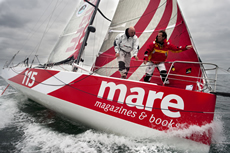 |
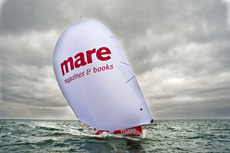 |
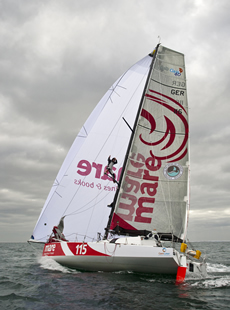 |
 |
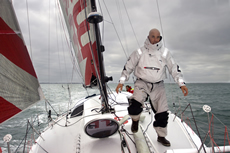 |
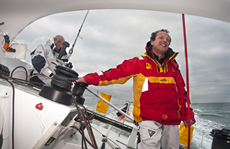 |
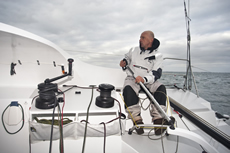 |
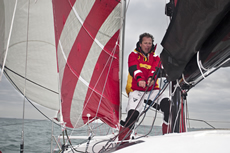 |
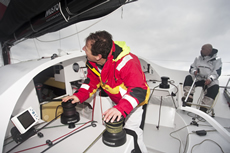 |
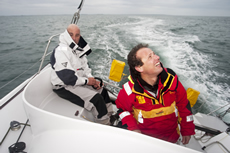 |
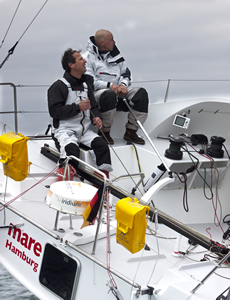 |
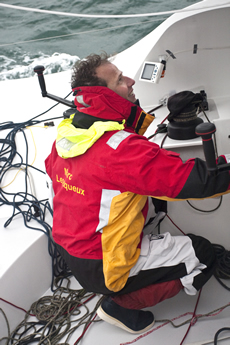 |

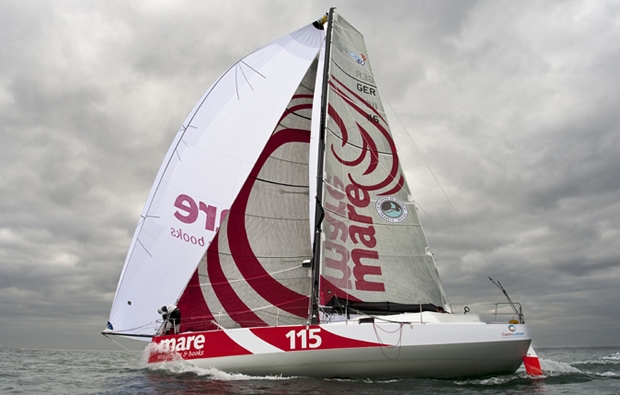
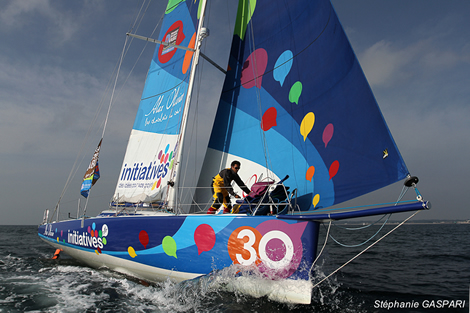
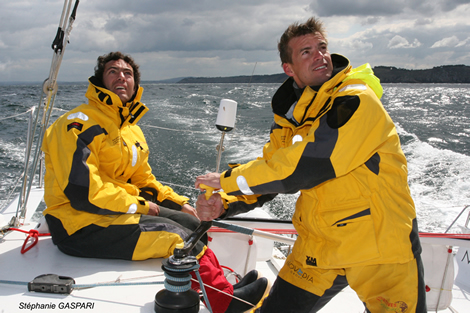
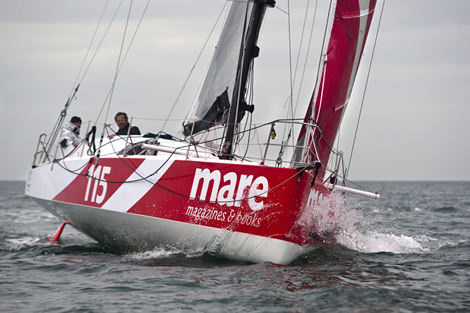









Latest Comments
nicko 13/03/2012 - 12:34
" The 14 strong fleet that competed in that race is down a little this year with 11 boats taking part, but the level of competition is if anything stronger." There were actually 24 starters in the last race although only 14 finishers. http://www.thedailysail.com/offshore/09/48043/we-look-at-the-class-40-fl... The field certainly has good depth in this race from the 11 boats competing although the likes of Bernard Stamm and Giovani Soldini ensured there was plenty of competition at the front of the last race too.rmb 12/03/2012 - 10:48
The boat is faster due to good design and construction. NOT due to the rig. When we were 2 boating with the Akilaria 2, we did not rake the mast. The boat is minimum weight, wwith a light mast, a low center of gravity, and an excellent build. Rather than complain, the class needs to get their rules in order, and close the loopholes before things do get out of hand.Add a comment - Members log in